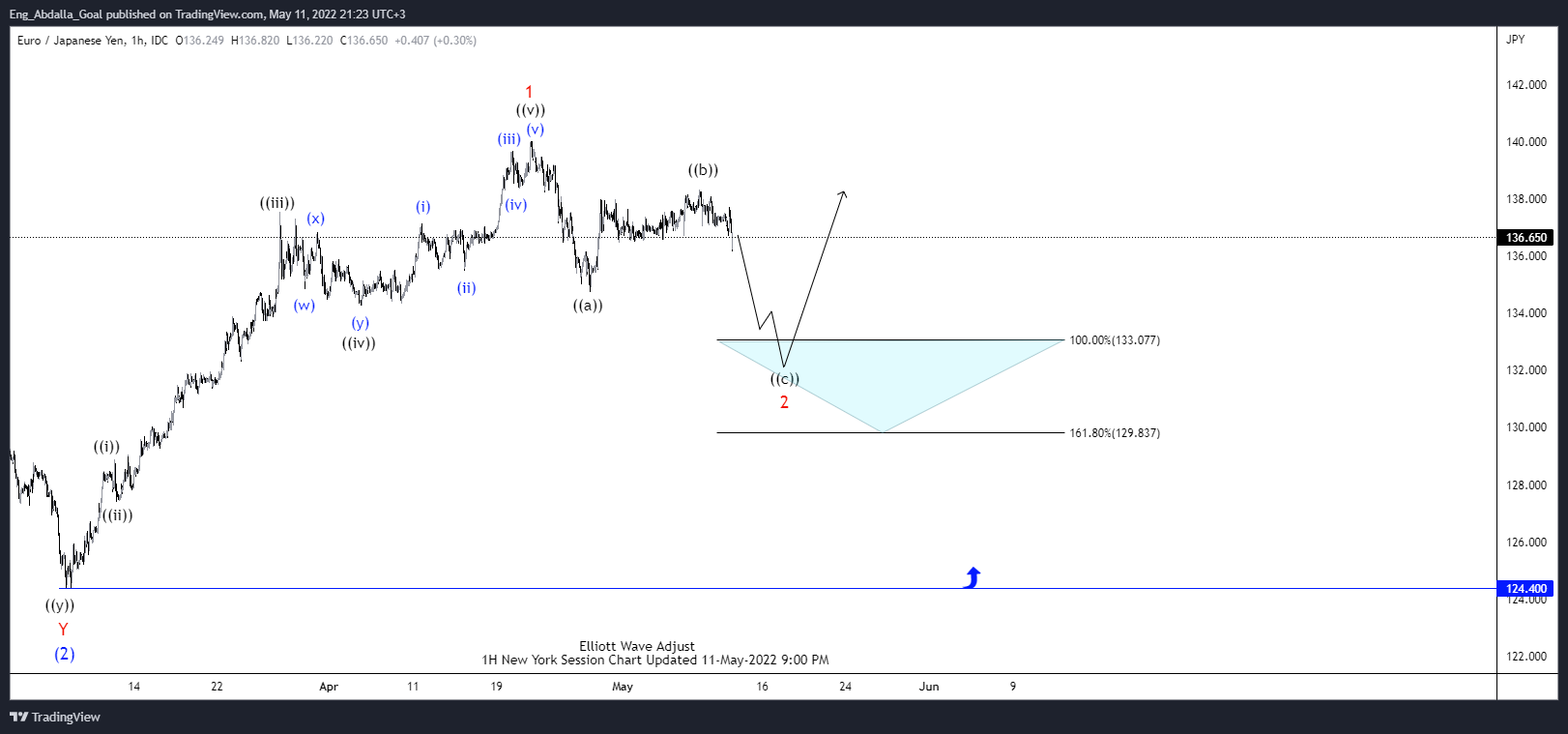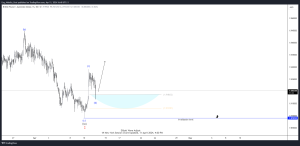Cryptocurrency trading has become more than just a trend; It is a global phenomenon that has attracted the attention of both experienced investors and newcomers alike. In this comprehensive guide, we’ll walk you through everything you need to navigate the exciting world of cryptocurrency trading, from understanding the basics to mastering advanced strategies.
Cryptocurrency trading has become more than just a trend; It is a global
Cryptocurrency trading has become increasingly popular in recent years, attracting both experienced investors and newcomers alike. In this guide, we’ll explore the world of cryptocurrency trading, covering everything from the basics to navigating the constantly changing landscape of digital assets.
Understanding the Basics: What is Cryptocurrency?
Cryptocurrency, also known as digital or virtual currency, is a decentralized form of currency that relies on cryptography for secure financial transactions. Unlike traditional currencies issued by governments, cryptocurrencies work on decentralized networks built on blockchain technology. This innovation ensures transparency, immutability, and security in transactions, making cryptocurrencies an attractive alternative to fiat currencies.
The Evolution of Cryptocurrency Trading
The origins of cryptocurrency trading can be traced back to the introduction of Bitcoin in 2009 by an anonymous individual or group named Satoshi Nakamoto. Bitcoin, the first cryptocurrency, laid the foundation for the development of many other digital currencies, collectively known as altcoins. Over time, cryptocurrency trading has evolved from a niche interest to mainstream adoption, with a wide range of cryptocurrencies and trading platforms emerging to meet the growing demand.
Why Cryptocurrency Trading Matters
Cryptocurrency trading involves buying, selling, and exchanging digital currencies like:
Bitcoin
Ethereum
Ripple.
Unlike traditional currencies, cryptocurrencies operate on decentralized networks using blockchain technology.
Cryptocurrency trading is important for many reasons, including its ability to democratize finance and provide financial inclusion to individuals around the world. Unlike traditional financial systems, which may exclude certain demographics, cryptocurrency trading offers anyone with Internet access the opportunity to participate in global financial markets. Additionally, cryptocurrencies serve as a hedge against inflation and political instability, providing a store of value in uncertain times.
Getting Started with Cryptocurrency Trading
If you are interested in entering the world of cryptocurrency trading, it is essential to start with careful planning and a solid understanding of the fundamentals. Here’s a comprehensive guide to help you start your journey on the right track.
Setting Up a Cryptocurrency Wallet
Before you can start trading cryptocurrencies, you need to set up a digital wallet to safely store your assets. A cryptocurrency wallet can be either a software program or a hardware device that stores your public and private keys, allowing you to send, receive, and store digital currencies. It is important to choose a reputable wallet provider that prioritizes security and offers user-friendly features to manage your digital assets effectively.
Choosing the Right Cryptocurrency Exchange
It is important to select the right cryptocurrency exchange to execute trades efficiently and securely. With so many exchanges available, consider factors such as security measures, trading fees, liquidity, and user interface. Popular cryptocurrency exchanges like Binance, Coinbase, Kraken, and Bitfinex cater to different trading preferences and experience levels.
Understanding Market Dynamics: Bull vs. Bear Markets
In cryptocurrency trading, it is essential to understand the market dynamics to make informed investment decisions. A bull market refers to a period of rising prices and optimism among traders, characterized by increased investor confidence and higher trading volumes. Conversely, a bear market indicates a decline in prices, as well as pessimism and a lack of confidence in the market. By analyzing market trends and sentiments, traders can identify opportunities to exploit price fluctuations and maximize profits.
Understanding the Fundamentals of Cryptocurrency Trading
Plunging into the world of cryptocurrency trading requires an understanding of its fundamentals. Let’s highlight these key concepts to equip you with the knowledge you need to tackle the complexities of the digital asset market.
Market Analysis: Technical vs. Fundamental
Effective market analysis serves as the cornerstone of successful cryptocurrency trading. There are two primary approaches: technical and fundamental analysis, each providing unique insight into market behavior.
Technical Analysis: This method involves examining historical price data and market statistics to predict future price movements. Traders use tools such as charts, indicators, and patterns to identify trends and make informed trading decisions.
Fundamental analysis: This approach highlights the underlying factors that influence cryptocurrency prices, such as project fundamentals, adoption rates, regulations, and macroeconomic trends. By evaluating the intrinsic value of digital assets, traders can assess their long-term potential and choose strategic investment options.
Reading Cryptocurrency Charts
Cryptocurrency charts visualize price movements over time, providing valuable insight into market trends and patterns. It is important to understand how to interpret these charts to identify entry and exit points and formulate effective trading strategies.
Candlestick charts: These charts display price movements within a specific time frame, with each candlestick representing the open, high, low, and close prices during that period. Traders analyze candlestick patterns to detect potential trend reversals or continuations.
Line Charts: Line charts depict the closing prices of cryptocurrencies over time, offering a simple visualization of price trends. While they are less detailed than candlestick charts, they provide a clear illustration of the overall market direction.
Identifying Market Trends and Patterns
Recognizing market trends and patterns is essential to predicting price movements and making informed trading decisions. Various tools and techniques help traders identify and interpret these patterns effectively.
Trend analysis: This involves identifying the direction of price movements over time: upward (bullish), downward (bearish), or sideways (consolidation). Traders use trend lines and moving averages to understand market trends and adjust their strategies accordingly.
Chart Patterns: Patterns such as triangles, flags, and head and shoulders formations provide visual signals about potential price reversals or continuations. By recognizing these patterns, traders can predict market movements and execute trades with confidence.
Developing a Trading Strategy
Developing a strong trading strategy is important for consistent success in cryptocurrency trading. A well-defined strategy helps traders deal with market volatility and take advantage of profitable opportunities.
Setting Clear Goals and Objectives
Establishing clear goals and objectives is the first step in developing a trading strategy. Whether aiming for short-term profits or long-term investment growth, defining specific goals helps traders align their actions with desired outcomes.
Risk Management Techniques
Managing risk in cryptocurrency trading is paramount due to market volatility. Techniques such as setting stop-loss orders, diversifying the portfolio, and limiting position sizes help minimize potential losses and protect capital.
Choosing the Right Trading Style: Day Trading, Swing Trading, or Holling
Selecting the appropriate trading style depends on personal preferences, risk tolerance, and time commitment.
- Day trading involves executing multiple trades within a day to take advantage of short-term price fluctuations, which requires constant market monitoring and quick decision-making.
- Swing trading: This involves holding positions for days to weeks to profit from medium-term price trends, offering more flexibility and less time commitment than day trading.
- Holling refers to holding on to cryptocurrencies for the long term while prioritizing asset accumulation over short-term gains. Hollers believe in the long-term potential of their investments despite short-term price fluctuations.
By mastering these fundamental principles and crafting a sound trading strategy, aspiring cryptocurrency traders can navigate the digital asset market with confidence and achieve their financial goals.
Understanding Cryptocurrency Market Volatility
Cryptocurrency markets are known for their wild fluctuations, making it important to understand their dynamics. Let’s discuss the factors that drive price changes, ways to handle emotions during turbulent times, and ways to profit from market fluctuations.
Factors Influencing Cryptocurrency Prices
The value of cryptocurrencies is influenced by a variety of factors, ranging from investor sentiment to technological advancements. Understanding these drivers is important to interpret market changes and make wise trading choices.
- Market Sentiment: Investor sentiments heavily influence cryptocurrency prices. Positive news, regulatory changes, and institutional involvement can boost confidence, pushing prices higher. Conversely, negative news or regulatory uncertainty may cause prices to decline.
- Supply and Demand: Like traditional assets, cryptocurrencies follow basic supply and demand rules. Factors such as scarcity, utility, and network effects affect demand, which in turn affects prices.
- Technological Developments: Innovations, upgrades in blockchain technology, and the launch of new cryptocurrencies can cause significant price changes. Projects with strong fundamentals and innovative solutions attract investor interest, leading to higher prices.
Managing Emotions in Volatile Markets
Emotions run high in cryptocurrency trading, especially during market turmoil. It is important to keep emotions like fear and greed in check to make rational decisions and avoid costly mistakes.
- Stay informed: Staying updated with market news, trends, and developments helps keep emotions in check. A well-informed trader can make decisions based on facts rather than emotions.
- Maintain discipline: Establishing clear trading rules and following them helps prevent impulsive actions during volatile periods. Emotional trading decisions can be prevented by implementing risk management strategies and sticking to predetermined entry and exit points.
Strategies for Profiting from Market Volatility
Market volatility isn’t just risky; it presents opportunities for profit. Employing effective strategies can help traders make the most of price fluctuations and maximize returns.
- Day Trading: Day traders take advantage of short-term price movements within a single trading day. Using technical analysis and intraday price patterns, they aim to profit from short-term volatility.
- Swing Trading: Swing traders hold positions for several days to weeks with the goal of making profits from medium-term price trends. Identifying key support and resistance levels helps them take advantage of price changes and trend continuation.
- Arbitrage: Arbitrage involves taking advantage of price differences between different exchanges or trading pairs. Traders buy assets where prices are low and sell them where prices are high and make profits from the price difference.
Executing Trades Effectively
It is important to execute trades quickly and accurately to take advantage of market opportunities. Understanding order placement, types, and tips for faster execution increases trading efficiency.
Placing Buy and Sell Orders
Placing an order involves specifying the quantity and price at which you wish to execute a trade. Traders can choose between market orders executed at the current market price or limit orders executed at a specific price or better.
Understanding Order Types: Market, Limit, Stop-Loss, and Trailing Stop
- Market Orders: Executed instantly at the best available market price.
- Limit order: Specify the price at which traders are willing to buy or sell an asset.
- Stop-loss order: automatically triggering a market order to sell an asset when its price falls below a predetermined level, limiting potential losses.
- Trailing Stop Order: Automatically adjust the stop price when the market price moves favorably, allowing traders to lock in profits while minimizing potential losses.
Tips for Improving Trade Execution Speed
- Use reliable platforms: Opt for reputable trading platforms with fast order execution to ensure timely trades.
- Optimize the Internet Connection: Maintain a stable, high-speed Internet connection to reduce latency and performance delays.
- Practice efficient order placement: Familiarize yourself with the platform’s interface and order placement process for quick and accurate trades.
By mastering these concepts and techniques, traders can confidently navigate the cryptocurrency markets and take advantage of volatility to achieve their trading goals.
Technical Analysis Tools for Cryptocurrency Trading
Harnessing the power of technical analysis tools is essential to navigating the world of cryptocurrency trading. Here, we’ll explore some essential tools to help you make informed trading decisions.
Introduction to Candlestick Patterns
Candlestick patterns provide visual signals about price movements over time. It is important to understand these patterns to gain insight into market sentiment and potential trends.
- Bullish patterns signal a possible rise in prices.
Examples: “Hammer,” “Bullish Engulfing,” and “Morning Star” patterns. - Bearish patterns signal a possible decline in prices.
Examples: “Shooting Star,” “Bearish Circle,” and “Evening Star” patterns.
Recognizing these patterns empowers traders to anticipate market reversals or continuations.
Using Moving Averages to Identify Trends
Moving averages smooth out price data to reveal trends over time. They help traders identify trend direction and potential reversal points.
- Simple Moving Average (SMA): Calculates the average price over a specified period.
- Exponential Moving Average (EMA): Gives more importance to recent price data.
Analyzing the interaction between price and moving averages aids in identifying trend reversals and establishing entry and exit points.
Utilizing Relative Strength Index (RSI) and MACD Indicators
RSI and MACD are momentum indicators that are used to assess market conditions and potential trend changes.
Relative Strength Index (RSI): Measures the magnitude of recent price changes to identify overbought or oversold conditions.
Moving Average Convergence Divergence (MACD): Identifies trend direction and momentum.
Including these indicators in the analysis provides information about market movement and trend changes.
Risk Management Strategies for Cryptocurrency Traders
Effective risk management is essential for preserving capital and minimizing losses in cryptocurrency trading.
Setting Stop-Loss and Take-Profit Levels
Stop-loss and take-profit orders help limit losses and lock in profits.
- Stop-loss order: trigger a sell order when the price of an asset reaches a predetermined level.
- Take Profit Orders: Trigger a sell order when the price of an asset reaches a predetermined profit target.
Implementing these orders helps with risk management and the protection of capital.
Diversification: Building a Balanced Portfolio
Diversifying investments across different assets reduces overall risk exposure.
- Asset Allocation: Allocate capital across different cryptocurrencies with different risk profiles.
- Risk assessment: Evaluate the risk-return profile of each asset and adjust the portfolio allocation accordingly.
Diversification reduces the impact of volatility on individual assets and enhances long-term portfolio performance.
Avoiding Overtrading and FOMO (Fear of Missing Out)
Overtrading and FOMO can lead to impulsive decisions and increased risk.
- Trading discipline: Stick to predefined strategies and avoid impulsive trading.
- Patience and Caution: Be patient and avoid chasing price movements driven by FOMO.
By maintaining discipline and patience, traders can minimize risks and avoid significant losses.
Incorporating these technical analysis tools and risk management strategies into your trading approach empowers you to make informed decisions, manage risks effectively, and strive for long-term success in cryptocurrency trading.
Psychology of Trading
Trading involves more than just analyzing charts and indicators; it also includes the psychology behind decision-making. Let’s explore some key aspects of the psychology of trading to help you become a more disciplined and successful trader.
Understanding Cognitive Biases in Trading
Cognitive biases are built-in mental shortcuts that can affect decision-making, often leading to irrational behavior in trading.
- Confirmation bias is the tendency to seek out information that confirms existing beliefs, leading traders to ignore contradictory evidence.
- Loss Aversion: Fear of loss can cause traders to hold losing positions for too long in the hope of a reversal.
- Anchoring: Fixing decisions on a particular price level or outcome can cloud judgment and lead to poor decision-making.
Awareness of these biases is important to overcome them and make rational trading decisions.
Overcoming Fear and Greed
Fear and greed are powerful emotions that can cloud judgment and lead to impulsive decisions in trading.
- Fear: Fear of missing out (FOMO) can lead traders to enter positions hastily, while fear of loss can prevent traders from taking necessary risks.
- Greed: Greed can lead traders to overleverage their positions or ignore risk management principles in the pursuit of higher returns.
By identifying and managing these emotions, traders can make more rational and disciplined decisions.
Maintaining Discipline and Patience
Discipline and patience are essential qualities for successful trading.
- Stick to your trading plan. Develop a clear trading plan with predefined entry and exit points and stick to it faithfully.
- Avoid emotional trading: Avoid making impulsive decisions based on emotions such as fear or greed. Instead, rely on your trading strategy and analysis.
- Practice Patience: Be patient and wait for a high-probability trade setup to occur. Haste in business can lead to unnecessary losses.
Maintaining discipline and patience allows traders to stay focused on their long-term goals and avoid costly mistakes.
Advanced Trading Techniques
Once you have mastered the basics, you can consider exploring advanced trading techniques to further enhance your trading abilities.
Leveraging Margin and Futures Trading
Margin and futures trading allow traders to increase their purchasing power and potentially increase profits.
- Margin trading: borrowing funds from the broker to trade larger positions than your account balance allows.
- Futures trading: contracts that allow traders to speculate on the future price of an asset, enabling both long and short positions.
Although these techniques offer opportunities for increased profits, they also involve higher risks and should be adopted with caution.
Arbitrage Opportunities in Cryptocurrency Markets
Arbitrage involves taking advantage of price discrepancies between different markets or exchanges to make profits.
- Triangular arbitrage: profiting from price differences between three different currencies or assets.
- Exchange Arbitrage: Taking advantage of price variations between different cryptocurrency exchanges.
Arbitrage opportunities are often short-term and require quick execution to maximize profits.
Algorithmic Trading Strategies
Algorithmic trading involves using computer algorithms to automatically execute trades based on predefined criteria.
- Market Making: Providing liquidity in the market by continuously placing buy and sell orders.
- Trend following: Identifying and taking advantage of price trends using mathematical algorithms.
Algorithmic trading can help traders execute trades more efficiently and take advantage of market inefficiencies.
By understanding and applying these advanced trading techniques, you can further hone your trading skills and strive for greater success in the cryptocurrency markets.
Security Best Practices
In the field of cryptocurrency trading, security is of paramount importance. The digital landscape is rife with potential threats, ranging from hacking attempts to phishing scams, making it imperative for merchants to strengthen their security. In this comprehensive guide, we discuss in-depth security best practices to protect your investments and personal information.
Protecting Your Investments: Importance of Security Measures
Securing your cryptocurrency investments This should be a top priority for any trader. With the proliferation of cyber threats, it is important to implement strong security measures to thwart unauthorized access. Here are some best practices to consider:
Hardware Wallets
Invest in a hardware wallet to store your cryptocurrencies offline. Unlike online wallets, hardware wallets provide better security for your digital assets by disconnecting them from the internet, thus reducing the risk of hacking attempts.
Multi-Signature Wallets
Opt for multi-signature wallets that require multiple private keys to authorize transactions. By adding an extra layer of security, multi-signature wallets reduce the risk of unauthorized access to your funds.
Cold Storage
Take advantage of cold storage solutions to make the most of your funds. By keeping your assets offline and disconnected from the internet, cold storage provides an additional layer of protection against cyber threats.
By incorporating these security measures into your trading strategy, you can reduce the risk of unauthorized access to your cryptocurrency holdings and trade with peace of mind.
Choosing a Secure Password and Two-Factor Authentication
Building a strong defense against unauthorized access includes implementing strong passwords and enabling two-factor authentication (2FA) across all your cryptocurrency accounts. Here’s what you need to know:
Strong Passwords
Create complex passwords consisting of a combination of letters, numbers, and special characters. Stay away from easily-guessed phrases or personal information to strengthen the security of your account.
Two-Factor Authentication (2FA)
Enable 2FA on all your cryptocurrency exchange and wallet accounts. By requiring a secondary verification method, such as a one-time code sent to your mobile device, 2FA adds an additional layer of security against unauthorized access.
By following these security protocols, you can significantly increase the flexibility of your accounts and protect your investments from potential threats.
Safeguarding Against Phishing and Social Engineering Attacks
Phishing and social engineering attacks pose significant risks to cryptocurrency traders, often tricking individuals into revealing sensitive information. Take the following preventive measures to reduce these risks:
Verify URLs
Before entering your login credentials or sensitive information, double-check the validity of the website URL. Beware of phishing websites masquerading as legitimate platforms to steal your data.
Exercise Caution
Be alert and use caution when encountering unsolicited emails, messages, or phone calls requesting personal or financial information. Legitimate organizations will never ask for sensitive information via email or text.
Stay Informed
Educate yourself about common phishing techniques and social engineering tactics to recognize potential threats and avoid falling victim to scams. It is important to stay informed to protect your assets in the ever-evolving landscape of cyber threats.
Tax Implications of Cryptocurrency Trading
When dealing with the complexities of cryptocurrency trading, it is essential to consider the tax implications associated with your transactions. Here’s what you need to know to ensure compliance with tax laws:
Understanding Tax Obligations
Familiarize yourself with the tax laws applicable to cryptocurrency transactions in your jurisdiction. Depending on your location, business profits may be subject to capital gains tax or treated as ordinary income.
Reporting Requirements
Follow the reporting requirements for cryptocurrency transactions in your country. Ensure accurate reporting of capital gains and losses on your tax returns to maintain compliance with tax laws.
Keeping Accurate Records
Maintain detailed records of all your cryptocurrency transactions, including purchases, sales, trades, and transfers. Keeping accurate records facilitates seamless tax reporting and reduces the risk of audit discrepancies.
Seeking Professional Advice for Tax Planning
Given the complex nature of cryptocurrency taxation, seek professional advice from qualified tax advisors or accountants. Here’s how they can help you:
Consultation
Schedule a consultation with a tax advisor specializing in cryptocurrency taxation to receive personalized guidance tailored to your specific situation.
Tax Planning
Collaborate with your tax advisor to develop a comprehensive tax planning strategy tailored to your financial goals. They can help you reduce tax liabilities and optimize your tax situation effectively.
Compliance Assistance
Rely on your tax advisor to ensure compliance with tax laws and regulations, reducing the risk of potential tax losses or audit investigations.
Staying Updated with Cryptocurrency News and Developments
In the dynamic landscape of cryptocurrency trading, it is important to stay abreast of market news and developments to make informed investment decisions. Here are some strategies to stay informed:
importance of Market News
Cryptocurrency markets are influenced by a myriad of factors, including regulatory changes, technological advancements, and market sentiment. Staying abreast of market news allows you to anticipate price fluctuations and identify attractive opportunities.
Reliable Sources
Trust reputable sources for cryptocurrency news and analysis to ensure accuracy and reliability. Follow established cryptocurrency news websites, industry publications, and trusted social media channels for real-time updates and insights.
Evaluating Market Impact
Use critical thinking when evaluating the impact of news on market sentiment. Consider contextual factors and market reactions to accurately understand the significance of news events.
By staying informed and proactive, you can tackle the complexities of cryptocurrency trading with confidence and take advantage of opportunities in the constantly evolving market landscape.
Common Mistakes to Avoid in Cryptocurrency Trading
Success in cryptocurrency trading depends on avoiding common pitfalls. Let’s look at the major mistakes to avoid:
Ignoring Fundamental Analysis
Fundamental analysis involves examining the core aspects of a cryptocurrency, such as its technology, team, and real-world utility. Ignoring this analysis may lead to ill-informed investment choices.
Falling Victim to Pump and Dump Schemes
Pump-and-dump schemes involve artificially inflating the price of a cryptocurrency with misleading information, after which it is sold for a profit. Dedication to these schemes can lead to considerable financial losses.
Neglecting to Securely Store Cryptocurrency Assets
Inadequately securing your cryptocurrency assets can leave them vulnerable to hacking and theft. It is important to use reputable wallets and employ security measures such as hardware wallets and multi-factor authentication.
Building a Community and Learning Network
Establishing a community and learning network is important to stay informed and hone your trading skills. Here’s what it says:
Joining Cryptocurrency Trading Communities
Join online communities and forums dedicated to cryptocurrency trading. These platforms provide opportunities to learn from experienced traders, share insights, and stay abreast of market trends.
Participating in Forums and Discussion Groups
Participate in discussions on cryptocurrency trading forums and social media groups. Asking questions, exchanging ideas, and seeking advice from peers can enrich your understanding and perspective.
Leveraging Social Media for Market Insights
Follow reputable cryptocurrency influencers and analysts on platforms like Twitter and LinkedIn. They often share valuable insights, market analysis, and trading strategies that can inform your decision-making process.
Case Studies: Successful Cryptocurrency Trading Strategies
Examining successful trading strategies can provide invaluable insight into achieving success in cryptocurrency trading. Let’s look at some case studies:
Analyzing Successful Traders’ Strategies
Study the strategies adopted by adept cryptocurrency traders. Analyze their approach towards market analysis, risk management, and trade execution to gain insight into the reasons for their success.
Lessons Learned from Notable Trading Successes
Review notable trading successes in the cryptocurrency sector and draw important lessons from their experiences. Understanding the factors behind their wins can help you refine your own trading strategy.
Applying Insights to Your Own Trading Approach
Incorporate the insights from case studies into your business approach. Integrate proven strategies, techniques, and risk management practices into your trading plan to increase your chances of success.
By avoiding common mistakes, developing a strong community and learning network, and studying successful trading strategies, you can enhance your cryptocurrency trading skills and achieve better results in the market.
The Future of Cryptocurrency Trading
As cryptocurrency trading continues to evolve, it is important to look ahead and understand what is going to happen next. Let’s explore some of the key aspects shaping the future of cryptocurrency trading:
Emerging Trends in Cryptocurrency Markets
Keep track of new trends reshaping the cryptocurrency markets. This includes developments in decentralized finance (DeFi), non-fungible tokens (NFTs), interoperability solutions, and how blockchain technology is being integrated into various industries.
Regulatory Outlook for Cryptocurrency Trading
Stay updated on the regulations related to cryptocurrency trading. Governments around the world are working on establishing guidelines for exchanges, taxation, investor protection, and combating illegal activities. Understanding these trends can help traders deal with legal complexities and compliance requirements.
Potential Challenges and Opportunities Ahead
Be prepared for the challenges and opportunities in cryptocurrency trading. While volatility, cybersecurity threats, market manipulation, and scalability issues are challenges to address, there are also opportunities arising from increased adoption, institutional participation, technological advancements, and market innovations.
FAQs (Frequently Asked Questions)
- What is the minimum amount needed to start trading cryptocurrency? The minimum amount varies depending on the exchange and cryptocurrency you choose. Some platforms allow trading with minimal amounts, while others may have specific requirements for deposits or trade sizes.
- How do I choose the right cryptocurrency exchange? When selecting an exchange, consider factors like security features, trading fees, supported cryptocurrencies, liquidity, user interface, customer support, and regulatory compliance. Thorough research and reading reviews can help find a suitable exchange.
- Can I trade cryptocurrency without a wallet? While some centralized exchanges offer custodial services, it’s generally recommended to have a cryptocurrency wallet for security. Wallets provide control over private keys, enhancing asset protection.
- How can I avoid cryptocurrency scams? To avoid scams, practice due diligence, be cautious of offers that seem too good to be true, verify projects and exchange legitimacy, avoid sharing sensitive information online, and prioritize security measures like two-factor authentication.
- Is cryptocurrency trading legal? Cryptocurrency trading legality varies by jurisdiction. While many countries have embraced it with regulatory frameworks, others impose restrictions or bans. Familiarize yourself with local laws to ensure compliance.
- What are the tax implications of cryptocurrency trading? Cryptocurrency trading can trigger tax obligations such as capital gains tax or income tax, depending on your jurisdiction. Understanding tax laws and maintaining accurate transaction records is crucial for compliance.
- How do I know which cryptocurrency to invest in? Choosing the right cryptocurrency requires research into factors like technology, team expertise, real-world applications, market demand, and long-term potential. Diversifying investments can mitigate risks.
- What is the difference between trading and investing in cryptocurrency? Trading involves frequent buying and selling to profit from short-term price fluctuations, while investing entails holding cryptocurrencies long-term based on intrinsic value and growth potential.
- How can I stay safe from hacking and theft in cryptocurrency trading? To stay safe, use reputable exchanges and wallets, enable two-factor authentication, opt for hardware wallets for substantial holdings, avoid sharing sensitive information online, and stay vigilant against phishing attempts.
- Can I make a living from cryptocurrency trading? While possible, earning a living from trading requires significant knowledge, experience, discipline, and risk management skills. Many traders supplement their income with trading, emphasizing the importance of understanding the associated risks.
Conclusion
Here’s a summary of the key points we’ve covered in our discussion on cryptocurrency trading:
- Understanding tax implications, selecting the right exchange, and avoiding scams are fundamental to successful trading.
- Researching cryptocurrencies, distinguishing between trading and investing, and protecting against hacking are crucial for making well-informed decisions.
- Continuous learning and improvement play a vital role in navigating the dynamic landscape of cryptocurrency trading.
We encourage you to keep learning and honing your skills as you embark on the thrilling journey of cryptocurrency trading. By staying updated, practicing caution, and embracing growth, you can effectively navigate the intricacies of the market and strive for success.



















